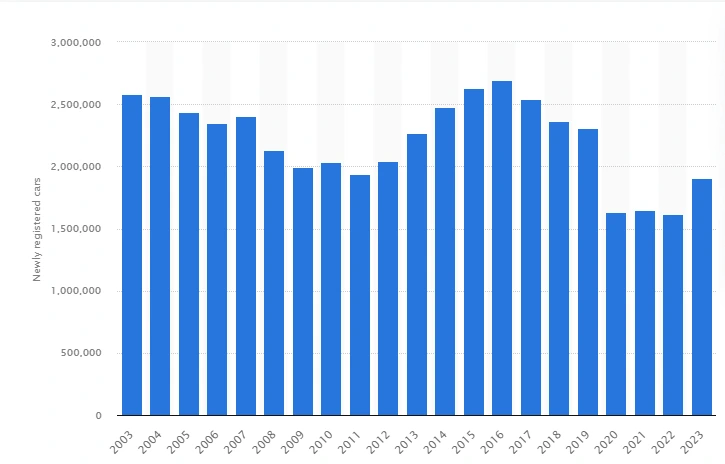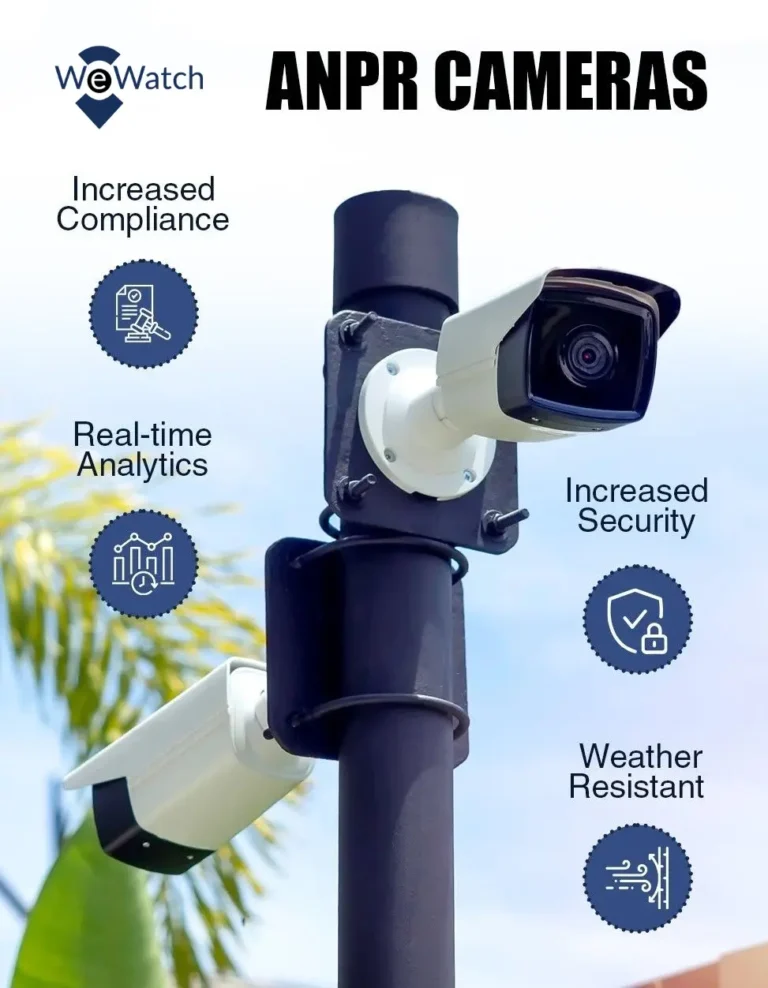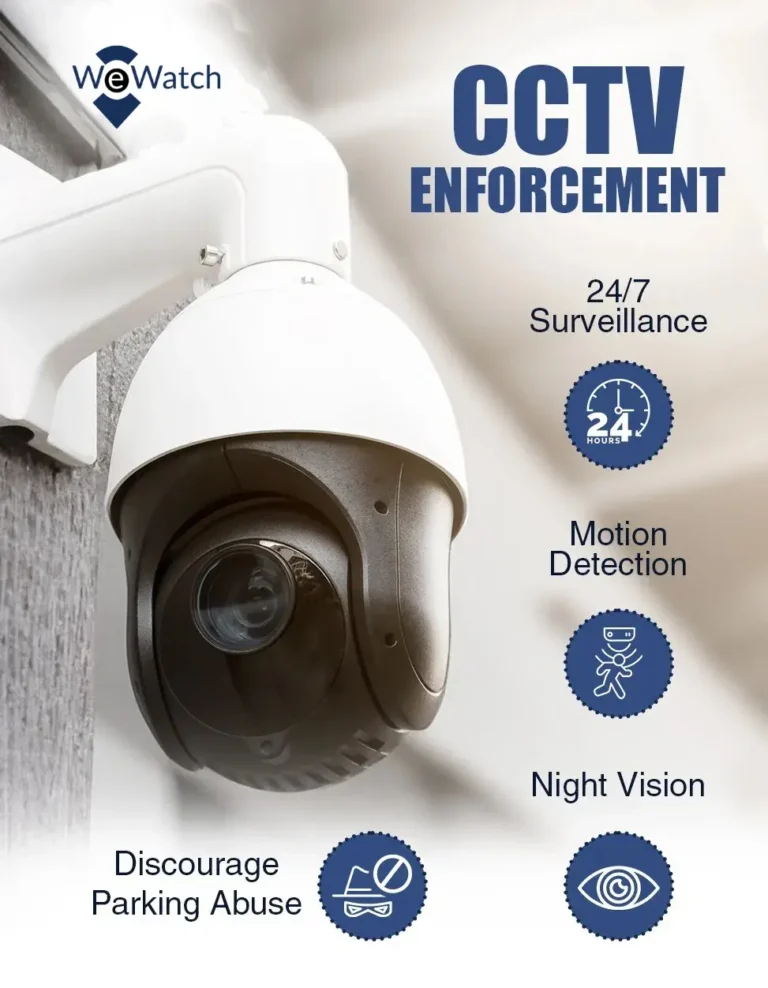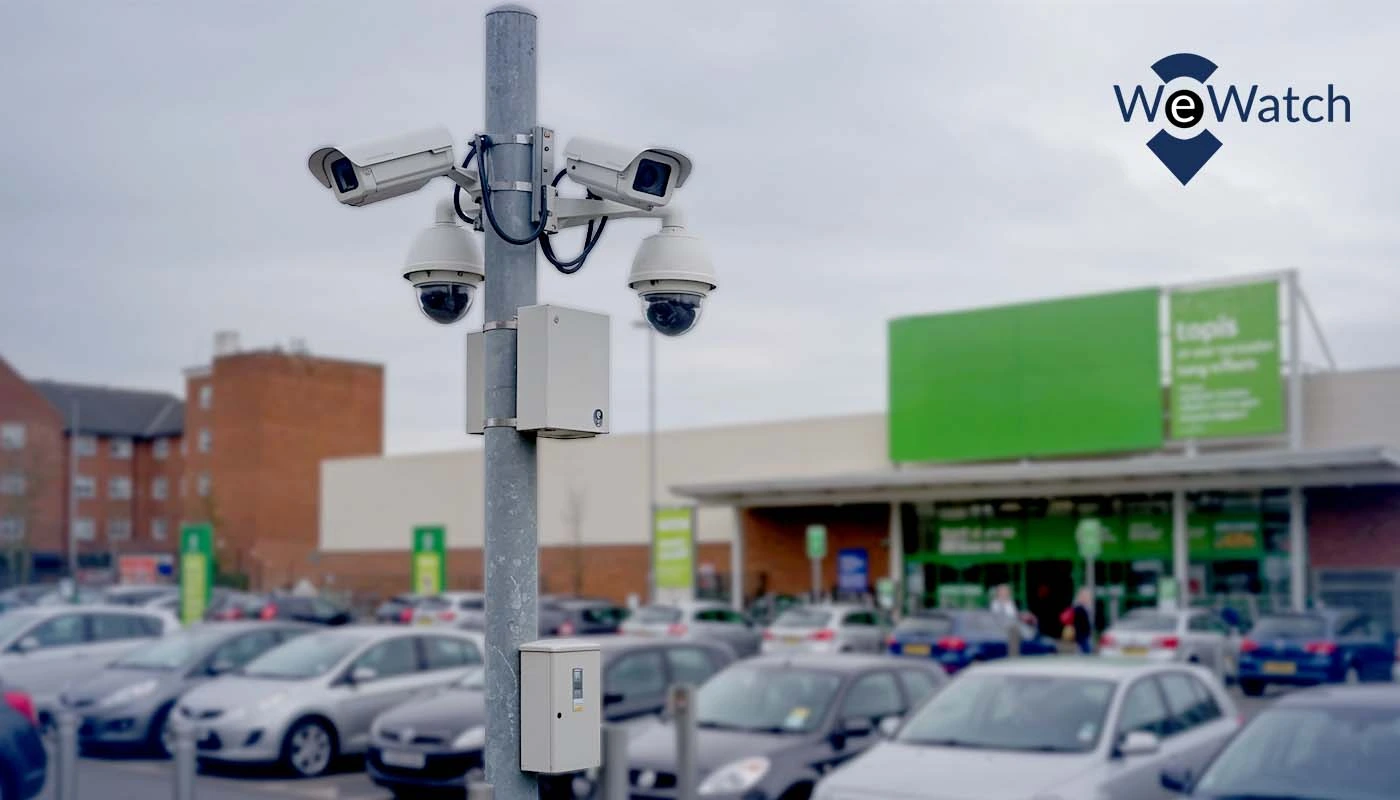Retail car parks are no longer just convenience add-ons—they directly impact foot traffic, tenant satisfaction, and overall property performance. A poorly managed car park frustrates shoppers, shortens visits, and in many cases, causes customers to avoid the location altogether. While the number of newly registered cars in the UK has steadily increased over the years—crossing over 2.5 million units at its peak—the availability of parking spaces has not grown at the same pace.

Total number of new passenger cars registered in the United Kingdom (UK) from 2003 to 2023
This imbalance has become a growing concern for retail businesses. With limited parking and no structured car park management, retailers risk losing footfall, damaging customer experience, and ultimately, seeing a dip in revenue. After all, the car park is the first touchpoint a shopper engages with—and the last thing they remember. If that experience is disorganised or chaotic, it leaves a lasting negative impression.
In this blog, we’ll walk you through the key strategies retailers can adopt to manage their car parks more efficiently and turn parking into a competitive advantage.
The Undeniable Role of Car Parks in Retail Success
Parking sets the pace for your entire retail operation. A shopper who struggles to find a space or is stuck waiting in a queue rather than browsing your store is already starting off on the wrong foot. That initial frustration often follows them inside, impacting not just their mood but also their spending behaviour, brand loyalty, and likelihood of returning.
On the other hand, a seamless parking experience helps set a positive tone. Shoppers who are relaxed and satisfied from the outset tend to stay longer and spend more. A well-maintained car park—with a clean layout, visible signage, and functioning equipment—not only improves operational efficiency but also enhances the overall customer experience.
Get the Basics Right: Flow, Safety, and Simplicity
Begin with traffic flow. Can vehicles enter and exit smoothly, without confusion or bottlenecks? Are lanes, entry points, and exits clearly marked? If you regularly face congestion during peak hours, it’s time to reassess the layout. Consider implementing one-way systems where possible and use clear signage to guide traffic and reduce chaos. Adequate lighting is also essential—not only for visibility but for creating a sense of safety and order.
Equally important is pedestrian safety, which should never be an afterthought. How easy is it for customers to walk from their vehicles to your store entrance? Are pedestrian crossings clearly marked and visible? Is there signage to direct foot traffic? Are ramps accessible for wheelchair users and prams? Ensuring smooth, safe, and inclusive access from the car park to your retail premises builds trust—and keeps shoppers coming back.
Smarter Parking Through Technology
Modern car parks thrive on data and automation. Technologies like ANPR (Automatic Number Plate Recognition) cameras allow you to monitor every vehicle entering and exiting the premises, reducing manual labour, streamlining enforcement, and providing real-time insights into occupancy levels.
Pay and display machines are another effective tool for retailers. These systems allow customers to easily pay for their parking time, reducing queuing, eliminating the need for attendants, and encouraging shorter, more efficient stays—especially in high-demand locations. They also provide valuable data on usage trends.
CCTV surveillance is equally essential. Strategically placed cameras not only deter theft, vandalism, and unauthorised access but also ensure that any incidents are captured and can be swiftly addressed. With the right technology in place, retailers can track which bays are most frequently used, identify peak traffic hours, and spot vehicles that overstay their welcome. This level of insight transforms basic parking management into a powerful strategic asset.

Re-evaluate Your Parking Payment Model
Free parking may appear customer-friendly, but it often attracts commuters, long-stay visitors, and individuals with no intention of shopping. This clogs up valuable space, leaving genuine customers circling in frustration. A more balanced approach is to adopt a fair-use model—such as offering the first hour free, followed by a flat hourly rate. This encourages quick visits to convert and discourages misuse of your facility.
Equally important is making the payment process seamless. Offer a variety of convenient options including contactless payment, app-based solutions, and reliable pay and display machines. Nobody wants to fumble for coins or download multiple apps just to exit. Clear signage, well-maintained machines, and swift payment processing significantly improve customer experience.
Let Data Lead the Way
Gone are the days of managing car parks by guesswork. With cloud-based systems and smart parking technologies, you can now access real-time data to assess performance. Occupancy tracking tools allow you to identify usage trends by the hour, day, or session—helping you pinpoint which bays are underused and which are consistently at capacity.
These insights empower you to fine-tune layouts, adjust pricing models, and optimise staffing based on actual demand. Better still, this data is incredibly valuable when engaging with tenants. Demonstrate how specific events influenced footfall or how layout changes improved flow. When you back your decisions with data—not assumptions—you inspire greater trust and alignment with your tenants.
Maintain Order with Foresight
Every car park will encounter visitors who disregard guidelines—those who overstay, occupy designated bays inappropriately, or attempt to bypass the system. That’s why consistent oversight is essential. However, it should be carried out with a balanced, customer-friendly approach.
Begin by clearly setting and communicating your terms and conditions. Ensure signage is visible at all entry points and throughout the premises. Let technology handle the monitoring—ANPR systems can automatically detect irregularities in real time, reducing the need for manual checks. When an issue is identified, ensure the response is prompt, measured, and transparent. Provide an easy-to-access process for customers to raise concerns or challenge decisions if needed. Oversight should feel fair and respectful—more like a conversation than a confrontation.
Manage Staff and Operational Access with Control
Not everyone using your car park is a customer. Staff members, delivery drivers, and cleaning crews all require regular access—but that access must be well managed to avoid disruption. Implement digital permits, scheduled entry times, and clearly marked bays to keep operations running smoothly.
Use parking software to whitelist staff number plates and track contractor access. This ensures fair usage, maintains order, and gives everyone clarity on the rules. A well-managed system creates balance—ensuring that operational needs are met without compromising the customer experience.
Adapt Your Approach Seasonally
Retail car park usage fluctuates dramatically throughout the year. December may see full capacity daily, while January might feel almost empty. Events like sales promotions, weekend markets, or even adverse weather conditions can quickly alter traffic patterns.
Your management strategy needs to be just as flexible. During busy periods, consider opening overflow spaces, increasing on-site assistance, or extending monitoring hours. In quieter times, experiment with flexible pricing, targeted promotions, or even short-term third-party use. By responding dynamically to seasonal trends, you maximise value from your car park year-round.
Keep Operations Streamlined Behind the Scenes
Managing a car park shouldn’t mean juggling spreadsheets and paper logs. Use a modern back-office platform that integrates permits, payments, user access, and issue management into one unified dashboard. You should be able to see—at a glance—who’s parked, who’s paid, what’s gone wrong, and what’s on the horizon.
Smart systems let you receive alerts for equipment faults and export reports with just a few clicks. The less time you spend on admin, the more focus you can place on delivering a car park experience that actually works for your customers and tenants alike.
Introduce Fair, Transparent Pricing for All
Parking payment shouldn’t be a source of conflict. Set fair, easy-to-understand pricing with clear signage and a reasonable grace period. Shoppers are generally accepting of charges—especially when it’s obvious where that revenue is going. Whether it funds maintenance, security, or local initiatives, make it clear. Even modest tariffs can generate substantial returns for a well-used, medium-sized site.
Design with Scalability in Mind
Retail environments are constantly evolving—stores expand, events come and go, delivery schedules shift. Your car park needs to keep pace. Invest in scalable, portable technology such as ANPR systems, modular pay stations, and cloud-based software that can be updated without costly infrastructure changes.
Leave certain zones unmarked or flexible so they can be repurposed quickly as needs change. Planning with the next five years in mind saves you both time and money when expansion or unexpected growth occurs.
Turn Your Car Park into a selling point
A clean, clearly marked, and well-managed car park leaves a lasting impression. On the other hand, littered surfaces, faulty equipment, and unclear exits can quickly frustrate visitors—often before they even set foot inside a store. Small issues should be addressed swiftly. Regularly monitor feedback and take complaints seriously.
Remember, you’re not just managing a physical space—you’re shaping a key part of the customer experience. When parking runs smoothly, the entire property earns a positive reputation.
Embrace Sustainability and Future-Proof Your Site
Sustainability is no longer a nice-to-have—it’s a necessity. Start with small but impactful changes like installing low-energy lighting, offering paperless receipts, and encouraging recycling. Then look to bigger steps such as EV charging stations, permeable paving to reduce surface runoff, and improved bicycle access.
Modern consumers increasingly expect environmentally responsible features, and implementing them boosts your brand image, reduces operational costs, and helps future-proof your site against evolving regulations.

Retail car parks don’t manage themselves—but when done right, they become powerful assets. They drive revenue, improve customer satisfaction, and support your tenants’ success. A car park is more than just a utility; it’s the gateway to your retail experience and a reflection of your brand.
It’s time to move beyond outdated systems and take a smarter, more strategic approach. At WeWatch, we specialise in intelligent parking management solutions designed to help retail properties stay ahead. From ANPR-powered monitoring to seamless payment integration and real-time analytics, our platform empowers you to transform car parks into well-oiled extensions of your retail ecosystem.
If you’re ready to unlock the full potential of your car park, reach out to our team at WeWatch. We’d be happy to walk you through our solutions and show you how we can help you create a smoother, more profitable experience for both shoppers and tenants.
